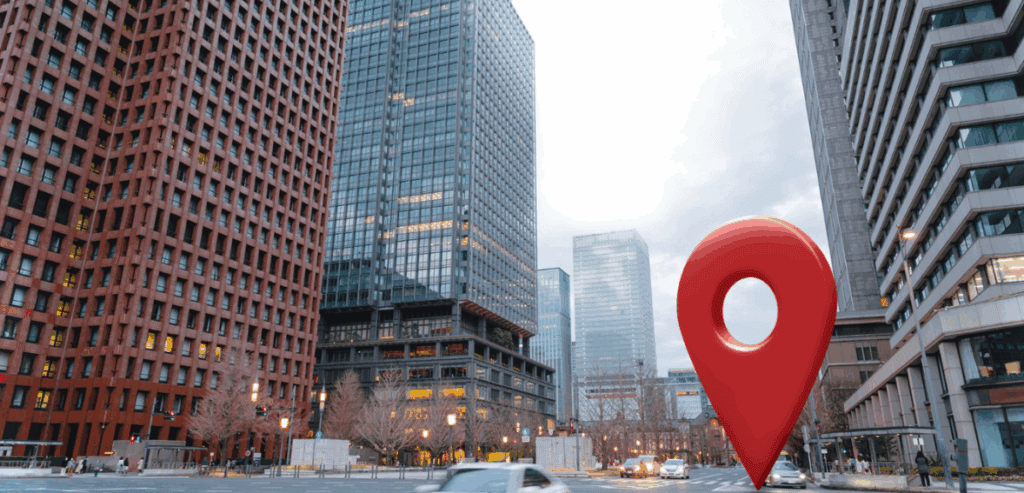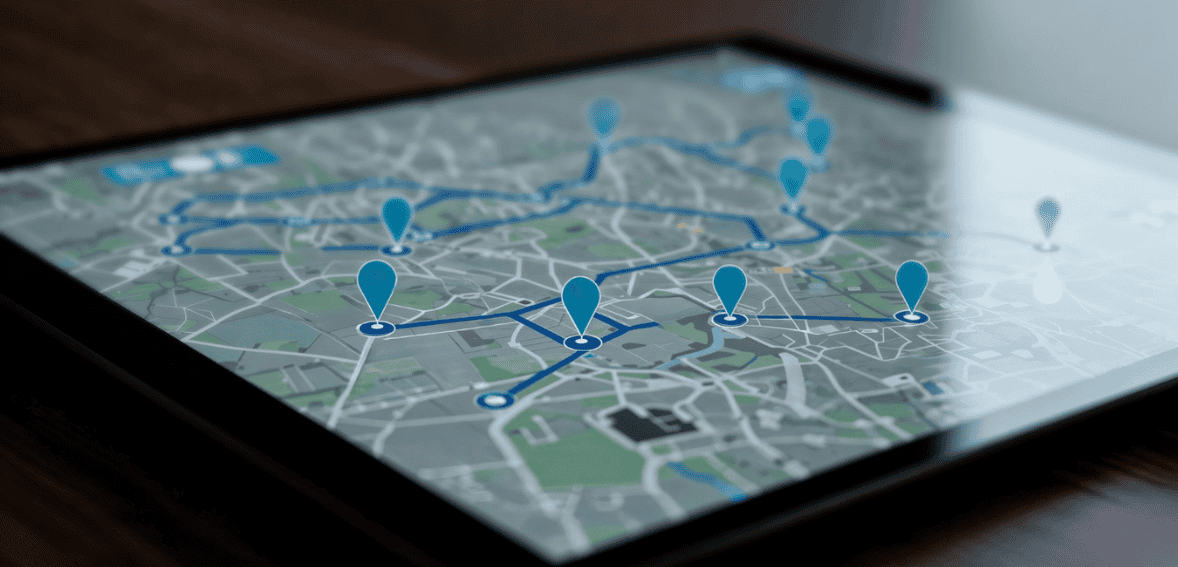When businesses think of local SEO, they stop at city level. While city based optimization is good, it often misses how people actually search. Many customers use neighborhood names, landmarks or even street level references when looking for services nearby. This is where hyperlocal SEO comes in. It narrows down the scope of search engine optimization to specific neighborhoods, streets or small community areas and helps businesses connect with the right audience.
With increasing competition across industries, visibility at neighborhood level has become crucial for businesses like cafes, clinics, gyms and local service providers. Customers are no longer satisfied with broad city based results; they want the closest, most convenient option. By adopting a strong neighborhood SEO strategy businesses can rise above competitors in search results that matter most.
Why Hyperlocal SEO Matters Today’s Market
Hyperlocal SEO matters because consumer search behavior has shifted towards convenience and proximity. Mobile search has made it natural for people to type queries like “coffee shop near Green Park” or “dentist in Jubilee Hills” instead of just “coffee shop in Hyderabad”. Businesses that match these hyperlocal searches have a better chance of attracting customers who are ready to buy.
Beyond convenience, hyperlocal SEO also builds trust. People prefer businesses that are a part of their neighborhood, whether it’s a trusted hardware store or a local pizza outlet. By optimizing for neighborhood specific terms, businesses reinforce their local identity and position themselves as reliable, accessible options. Search engines, especially Google prioritize relevance and proximity when showing local results, making local geotargeting a powerful tool. With hyperlocal optimization, businesses are not just targeting a broad market but are instead connecting with a very specific group of customers within walking or short driving distance.
Understanding the Difference Between Local and Hyperlocal SEO
Local SEO is about optimizing your business presence at a city or regional level. For example, a bakery might want to rank for “best bakery in Hyderabad”. This will get you customers across the city but might not get someone searching for “bakery in Madhapur” who is looking for something nearby. Hyperlocal SEO goes deeper by optimizing for neighborhood level searches and ensuring your business is discoverable by people who want results in their immediate surroundings.
The main difference is scale and intent. City-wide optimization is broad and can work for brand awareness but hyperlocal optimization is narrow and action oriented. Customers using hyperlocal searches have higher purchase intent. A strong neighborhood SEO strategy ensures your business isn’t lost among city-wide competitors but is instead highlighted for those searching in your exact area. Businesses that master hyperlocal tactics create opportunities to win over customers who are already nearby and ready to engage.
How Local Geotargeting Boosts Visibility
Local geotargeting is key to hyperlocal SEO. By using location specific keywords and ensuring accurate mapping, you can show up exactly where your customers are searching. For example, targeting “yoga studio near Banjara Hills Road No. 12” can drive higher conversions than just “yoga studio in Hyderabad”. This specificity ensures you reach searchers with stronger intent.
Geotargeting also extends to platforms beyond Google. Apps like Google Maps, Apple Maps, Yelp and even ride-sharing apps influence how customers discover local businesses. A solid local geotargeting strategy ensures consistent visibility across these platforms. By fine tuning your address, adding neighborhood references and using localized content, you build trust with search engines and customers. The more specific the location targeting the higher the chances of showing up in results where the customer is ready to act.
Optimizing Google Business Profile for Neighborhood Searches
One of the most effective hyperlocal SEO tactics is optimizing the Google Business Profile. Beyond adding a business name, address, and phone number, businesses should include neighborhood identifiers. For example, instead of simply listing “ABC Dental Clinic, Hyderabad,” adding “ABC Dental Clinic – Kukatpally” can make the listing more relevant for neighborhood searches.
Google Business Profile also allows businesses to update service areas, descriptions, and posts. Using references to nearby streets, landmarks, or residential areas strengthens neighborhood-level relevance. Reviews that mention specific neighborhoods also help boost credibility in local searches. When combined with accurate NAP (Name, Address, Phone) data across directories, an optimized GBP helps businesses dominate hyperlocal searches by showing up in the map pack and organic results simultaneously.
Creating Content with a Neighborhood Focus
Content marketing is not just for global reach; it can also drive hyperlocal visibility. Blogs, service pages, and landing pages tailored to neighborhoods can help businesses connect with local audiences. For example, a real estate agency could publish blogs about “Top Apartments in Kondapur” or “Why Madhapur is Ideal for Young Professionals.” These neighborhood-specific pieces attract local searchers and signal to search engines that the business is relevant to those areas.
Localized content can also include event announcements, neighborhood guides, or collaborations with local businesses. Adding these details creates a sense of community and builds authority. When businesses consistently use hyperlocal SEO techniques in content, they show up for people searching beyond generic city keywords. Such efforts allow them to connect emotionally as well, as customers often relate more strongly to businesses that actively engage with their neighborhoods.
Using Reviews and Testimonials to Enhance Neighborhood Relevance
Reviews have become a cornerstone of online credibility, and for hyperlocal SEO, they serve an additional purpose. When customers leave reviews that mention neighborhood names, they increase the chances of a business ranking for that area. For example, “This is the best salon in Jubilee Hills” carries significant hyperlocal value. Encouraging customers to naturally mention location in reviews can strengthen search visibility.
Testimonials on websites can be localized too. Highlighting customer stories from specific areas makes the business appear well-established in the neighborhood. For instance, a plumber could feature a testimonial that says, “Quick service in Gachibowli,” which signals both quality and locality. These location-rich reviews reinforce a strong neighborhood SEO strategy and build community-driven credibility.
Leveraging Social Media for Hyperlocal Engagement
Social media offers more opportunities for hyperlocal SEO. Instagram and Facebook allow geo-tagging which means posts will show up in neighborhood level searches. A restaurant posting photos with tags like “Kondapur” or “Hitech City” will attract nearby audiences and build brand recall in those areas.
Hyperlocal campaigns on social media can be community events, special offers for specific neighborhoods or collaborations with local influencers. This creates buzz in small geographic circles. When businesses combine social media with their local geotargeting strategy they create multiple touchpoints for neighborhood customers and reinforce visibility and trust.
Importance of Mobile Optimization in Hyperlocal SEO
Mobile is the primary driver of hyperlocal searches. People search “near me” on the go and businesses that don’t optimize for mobile will lose traffic. A mobile friendly website with fast loading times ensures users can access details like address, reviews and directions quickly.
Mobile optimization also works hand in hand with voice search. Queries like “find a pharmacy near Jubilee Hills” are being made through voice assistants. Businesses that structure their website with neighborhood specific content and conversational keywords align better with this trend. Prioritizing mobile experience as part of hyperlocal SEO ensures customers can find and interact with businesses when it matters most.
Building Local Backlinks for Neighborhood Authority
Backlinks are one of the strongest ranking signals and in hyperlocal SEO they can be targeted to neighborhood relevance. Collaborating with local bloggers, sponsoring neighborhood events or being listed in community directories builds credibility. For example a café sponsoring a local sports team can get mentions on event websites with strong neighborhood keywords.
These backlinks not only boost domain authority but also signals to search engines that the business is part of the local ecosystem. Partnerships with neighborhood organizations, schools or non-profits also creates authentic opportunities for localized mentions. Such efforts strengthen both online rankings and offline community connections making the neighborhood SEO strategy more effective.

Tracking and Measuring Hyperlocal SEO Success
Measuring the effectiveness of hyperlocal SEO requires going beyond general analytics. Businesses should track keyword rankings at the neighborhood level, monitor Google Business Profile insights, and analyze local traffic sources. Tools like Google Search Console and location-based rank trackers help identify whether neighborhood-specific keywords are performing well.
Engagement metrics, such as phone calls, direction requests, and store visits from Google Maps, provide deeper insights. Monitoring reviews and local backlinks also helps gauge whether the local geotargeting strategy is working. Consistent measurement ensures businesses can refine their efforts and maintain visibility in neighborhood-specific searches, ensuring that their hyperlocal tactics deliver long-term results.
Challenges in Implementing Hyperlocal SEO
While the benefits are clear, implementing hyperlocal SEO comes with challenges. One major hurdle is creating enough localized content to target multiple neighborhoods effectively. A business serving a large city may need to optimize for dozens of smaller areas, which requires careful planning and resources.
Another challenge is maintaining accuracy across platforms. Inconsistent NAP details or outdated business information can damage visibility. Competition is also intense, as many small businesses compete for the same hyperlocal audience. However, by combining strong content, optimized Google Business Profiles, and consistent hyperlocal SEO tactics, businesses can overcome these challenges and build long-term success.
Future of Hyperlocal SEO and Neighborhood Targeting
The future of hyperlocal SEO lies in deeper personalization and integration with technology. With advancements in AI and machine learning, search engines are becoming more adept at delivering hyperlocal results tailored to user behavior. Voice search, wearable devices, and augmented reality tools will only strengthen the demand for immediate, neighborhood-level answers.
Businesses that embrace these changes and invest in neighborhood SEO strategy early will remain ahead of the curve. As cities grow larger and more complex, people will continue to rely on hyperlocal searches to simplify decision-making. The businesses that connect with customers not just in cities but at the neighborhood level will secure stronger relationships and greater loyalty in the long run.
Integrating Hyperlocal SEO with Paid Advertising
Hyperlocal SEO works best when combined with targeted advertising strategies. Paid ads, especially those on Google Ads and social media platforms, can be set to focus on very small geographic areas. This means businesses can run campaigns aimed specifically at one neighborhood, a few streets, or even a small radius around their store. For example, a pizza outlet could use ads targeted within three kilometers of its location, ensuring only nearby customers see them. When this hyperlocal targeting aligns with organic optimization, visibility is maximized.
Paid ads can also highlight promotions tied to neighborhood events, festivals, or community gatherings. This kind of neighborhood-focused campaign not only drives traffic but also builds brand recall in the area. When businesses integrate paid ads with their hyperlocal SEO efforts, they achieve a layered presence; appearing in both organic and sponsored search spaces. Over time, this dual approach strengthens their local footprint and ensures they remain top-of-mind for neighborhood customers.
Role of Voice Search in Hyperlocal SEO
Voice search is transforming how people discover local businesses, and its role in hyperlocal SEO is expanding. When users ask their digital assistants for recommendations, they often include neighborhood-level specificity, such as “Find me a salon near Jubilee Hills.” These voice queries tend to be conversational and reflect real-life language. Optimizing website content with natural, long-tail phrases can help capture these searches.
Businesses should also focus on FAQs that mirror how people ask questions out loud. Phrases like “Where is the closest gym in Kukatpally?” or “Which pharmacy is open near Banjara Hills?” provide a framework for optimization. Voice search optimization strengthens a neighborhood SEO strategy by aligning digital content with the way customers naturally speak. Since voice queries are often tied to immediate intent, businesses that prepare for this trend can secure conversions faster. As adoption grows, ignoring voice search could mean losing out on an important slice of hyperlocal traffic.
Hyperlocal SEO for Multi-Location Businesses
For businesses with multiple outlets across a city, managing hyperlocal SEO becomes more complex but equally rewarding. Each location needs its own unique digital identity, including separate landing pages, Google Business Profile listings, and localized content. A retail chain with branches in Jubilee Hills, Gachibowli, and Madhapur cannot rely on a single city-wide page to rank. Instead, it must optimize each location individually to capture neighborhood-specific searches.
Multi-location businesses should also encourage reviews for each branch and ensure consistency in NAP details across directories. Creating content like “Best Deals in Kondapur Outlet” or “Events at our Gachibowli Branch” can personalize the online experience and make each store feel relevant to its immediate audience. With the right local geotargeting practices, large businesses can replicate the personal feel of small neighborhood shops while enjoying the scale of broader operations. This dual strategy creates a balance between brand recognition and hyperlocal connection.
Building Community Partnerships to Boost Hyperlocal Presence
Hyperlocal SEO is not just about digital optimization; it also thrives on real-world connections. Building partnerships with local schools, community organizations, or neighborhood events can strengthen a business’s presence both online and offline. When these partnerships are mentioned in local news portals, blogs, or social media pages, they generate backlinks and citations that improve neighborhood visibility.
For example, a café sponsoring a school event in Banjara Hills may gain coverage in community newsletters and social media groups. These mentions, combined with optimized content, improve search relevance for that neighborhood. Partnering with community influencers or local bloggers also helps businesses connect authentically with residents. By blending real-world engagement with hyperlocal SEO tactics, businesses establish themselves as true members of the community. This not only boosts rankings but also builds long-term loyalty among neighborhood customers.
Conclusion
Hyperlocal SEO is more than a trend; it is a necessity in today’s competitive market. By going beyond city-wide targeting and focusing on neighborhoods, businesses can tap into high-intent searches and become the go-to choice for nearby customers. From optimizing Google Business Profiles and creating neighborhood-specific content to leveraging reviews, social media, and mobile optimization, every tactic contributes to stronger local visibility. Ultimately, hyperlocal SEO, combined with precise local geotargeting and a thoughtful neighborhood SEO strategy, ensures businesses connect with the right audience at the right time. In a world where convenience and proximity drive customer choices, being visible at the neighborhood level is no longer optional but essential for growth.












